It’s a family affair: The 1974 Ford Escort restoration project worked on by two generations
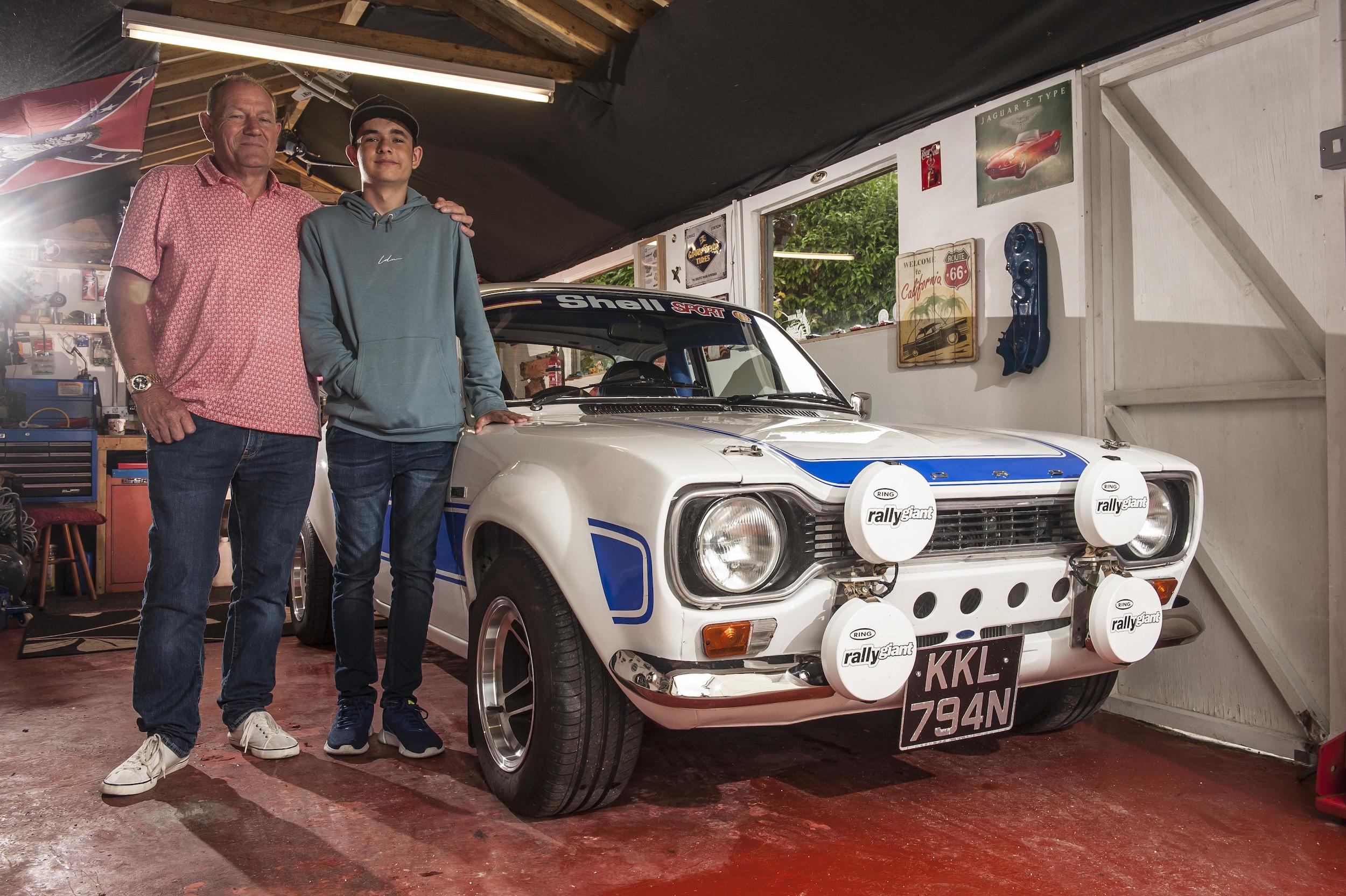
Fresh from the pages of Practical Classics Magazine, we meet the grandfather and grandson who tirelessly worked on restoring a beautiful 1974 Ford Escort MkI RS2000, plus John Boggis’ journey to rebuild his dream ‘wooden chassis’ Marcos.
As a specialist classic car insurance broker, we love seeing old cars being restored to their former glory, which is why we’ve linked up with Practical Classics to bring you two fantastic stories each month for you to digest and take as inspiration for your own classic rebuilds.
The Ford Escort MkI RS2000 that was restored by grandfather and grandson
Words by Ed Hughes and Pictures by Lauren Parsons
‘Grandad’s car’ normally brings to mind a dusty Austin A30 or a staid Rover – but when Grandad worked for Colin Chapman, you can bet something more exciting was stashed in his garage. Morgan Langdon is therefore a very lucky grandson, having regular rides in a spotlessly restored 1974 Ford Escort MkI RS2000.
But while Morgan has helped out with the project along the way, the car’s journey from wreck to resto started before he was even born – and involved grandfather, Andrew Morgan, in more drama than the average restoration. Along the way, it’s cemented a strong relationship between the two of them.
Andrew’s engineering career started in Norfolk. His father owned a boatyard and tuned Jaguar E-types and XJ6s. Andrew and his father were frequent visitors to Lotus’s Hethel HQ, having special permission to use the test track to put the Jaguars through their paces. Andrew spent his first working years in Chapman’s boatyard [and was even married to the great man’s PA] and so the go-faster impulse was reinforced with a great deal of specialist knowledge.
He went on to establish his own firm building powerboats, then was invited to move to Devon to set up a business which restored E-types. He retired after some 30 years to spend more time with his family and his own projects.
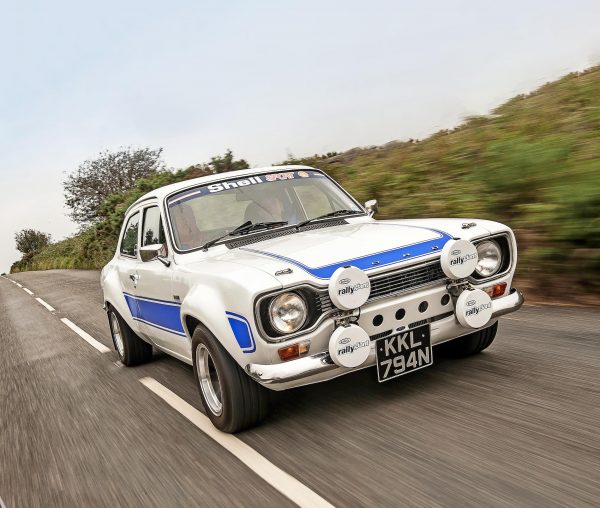
Although his CV is Jaguar-heavy, Andrew has a passion for Fords and parked on his driveway by the garage is an immaculate 1999 Escort van in Diamond White (the same as the RS) with Ford motorsport decals. It’s spotless in every detail. Andrew modestly admits to having “done a little bodywork on it, but it’s nothing special, really”. We beg to differ. He lets slip that his current project is a Sierra-based P100 pickup. Our admiration does not diminish.
The car that we’ve come to see, though, lives in a generously sized and immaculate garage. The space is garnished with neatly displayed automobilia. Its centrepiece is a 1974 Ford Escort MkI RS2000 in white with blue detailing. It has wider wheels, wider arches and lower springs than it originally had, plus its two-litre Pinto engine has been lightly breathed-on.
Andrew acquired the car after it had spent years rotting away with accident damage, so he had a more-or-less blank canvas to make a few tweaks here and there during the reconstruction.
The car’s second life began rather inauspiciously when its third owner failed to negotiate a roundabout. It was towed away, then parked up and left. In 1979 Andrew heard about it. £475 later he was the new owner of a complete car with bashed panelwork and dull red paint, which was peeling off to reveal a white factory finish.
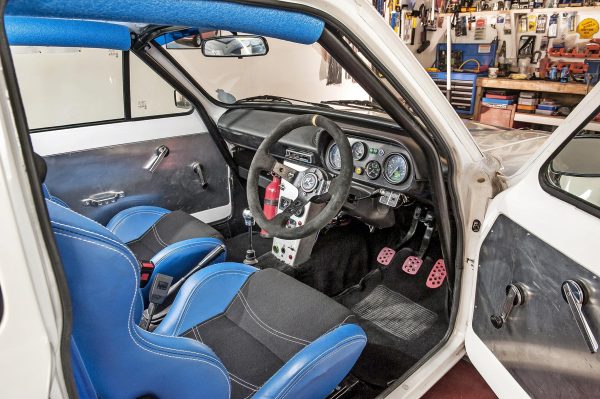
It was a good time to buy an RS2000, since the industry devoted to fast Ford replicas (and dodgy replicants) had not yet taken off, nor had the prices. The car has all the correct body features, chassis plates and stampings and is in every way the real deal. In a surprising twist, the original owner spotted it, freshly restored, returning from a rolling road session on the back of a trailer and followed it back to Andrew’s house for a chat!
It sounds like all fun and games, but Andrew and his Escort had some close shaves along the way. He was at work one day when the place caught on fire. The only thing that could be salvaged from what quickly became a very intense blaze was the Escort – which was dragged outside by fire crews, unscathed. It took six crews 18 hours to put the blaze out. No matter, Andrew soon had the shell prepped and painted, working in a hired facility.
He was also busy building the garage-workshop by his house where he could reassemble the car. He designed and constructed it himself and was working on the roof when he missed his footing and fell off, breaking two bones in his leg. Taken away by air ambulance, it was three months before he was able to walk again. This unfortunately left him only six weeks to finish it off – because his –Kaylee wanted to use it as a wedding chariot. With all of Andrew’s tools and facilities gone, Kaylee very generously put several thousand pounds into making sure he could make it happen. The day of the wedding was its first day back on the road. It performed faultlessly.
In fact, there are no more surprises in this story, because Andrew knew exactly what he wanted to do and how he wanted to do it. The RS2000 is somewhat enhanced from the original factory specification. What it isn’t, though, is a collection of tuning parts randomly chosen from a catalogue.
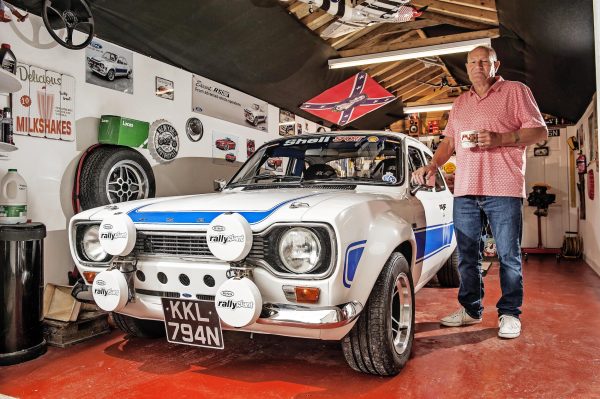
It’s sublimely well-sorted and is just as capable of a quiet drive in the country as it is of hooning around a track. It’s comfortable, it’s quiet, it’s easy to drive and handle and you don’t have to worry about keeping it going in a straight line or, indeed, round a corner. It even sounds refined: the sports exhaust has a businesslike but inoffensive rasp and the engine sounds ever-so-slightly menacing yet runs with the perfect regulation of a Swiss watch.
The basis of the car was the Type 49 shell, used for Mexico 1600, RS1600 and RS 2000 models. Between 1970 and 1975, these were produced in Ford’s AVO (Advanced Vehicle Operations) plant in Aveley, Essex. Reinforced chassis front legs, strengthening gussets and extra stitch-welding ensured it could put up with light competition use and was the perfect base for a full-time race or rally car.
The rear axle got anti-tramp bars to stop it winding up its leaf springs; anti-stone panels were fitted front and rear and there was an alloy sump which aided oil cooling. Andrew went on to add lower road springs, but opted for original-spec dampers all round. “You can fit adjustable ones, but I think the factory guys probably had the setting right to begin with,” says Andrew. “I can’t improve on that.”
The rear axle has a limited-slip differential to give those anti-tramp bars some work to do. “The steering is very neutral,” he notes, “although it’s heavy because of the 8.5-inch rims I fitted.” They don’t look out-of-place, do they? “No, well, the design is a very close copy of the RS4 rim which was originally fitted.”
The unassisted brake master cylinder sends fluid through a bias box, which allows adjustment of the front-rear balance. The front brakes use M16 brake calipers and ventilated discs, though the rear axle retains its standard drums. The pedal is rock-solid and again requires a physical effort that’s both quite satisfying and perfectly responsive.
Moving on to the engine bay, Andrew points out that the Pinto engine has been bored out from 2.0 to 2.1-litres. The RS2000 was supposed to give Mexico 1600 levels of performance, but with absolute ease – eliminating the highly-strung nature of the smaller engine.
“I’m not shy about driving it in the rain, getting it dirty – or even the possibility of something breaking or getting damaged,” explains Andrew. “It’s a car to be used and enjoyed. There wouldn’t be much point in having it otherwise.” It doesn’t tend to do short trips… they tend to accidentally become a day out.
So, what of the future? Grandad Morgan has five grandchildren. Grandson Morgan (14) has a Fiesta 1.1 that is next in line for expert attention, alongside the P100, while the youngest (18 months) demands to sit in the RS when visiting. Andrew has plans to build a second workshop behind his garage for Morgan.
He’s just restored a BMW 320 for his son – into which he’s inserted a Ford Cosworth engine. He toyed with the idea of putting it in the RS2000 instead. In the end, he thought better of it: “The thing is, it’s not about sheer power – it’s about enjoying the driving experience.” Having driven the RS, we couldn’t agree more.
To read the full version of how Morgan and his grandson managed to reconstruct his Escort visit the Practical Classics page.
The Marcos adventure that began with reading the Sunday Times
Interview by Danny Hopkins and Pictures by Laurens Parson
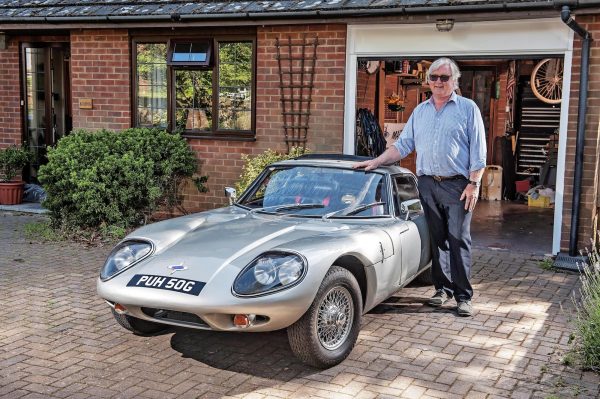
My story starts in the late 1960s. There was an article in the Sunday Times magazine about a solicitor who built a sports car with a wooden chassis, a Marcos, from a kit in a weekend. The car’s shape was eye-catching and it caught my imagination. I had to find one and eventually I did and so my latest, and according to Mrs B my final project started.
PUH50G, a 1969 1600GT with a Ford crossflow engine, arrived in 2018. The first of this style of Marcos (1967) had a Volvo straight six, but the crossflow was reasonably light and more than adequate for such a small and light car. The engine went to a local machine shop to be freed up, bored to 1700 and have new valve seats fitted. Then, off came the one-piece bonnet complete with its Herald catches.
One of the fun bits of rebuilding cars like this is finding out the source of original parts. The rocker switches in the dash are not MG, but Austin Allegro, the rear light clusters are Vauxhall Victor FB, also used by Lotus on the Elan.
The Marcos owner is fortunate to have Rory McMath who owns Marcos Heritage Spares. He worked for the company back in the day and is a really decent chap and always ready to help and advise. I decided to buy a new loom which Rory got for me. Kit cars are not renowned for their wiring and the large number of scotch connectors told their own story.
I like wiring. It is clean and logical. All you need is a meter, a wiring diagram, a decent ratchet crimper and the odd screwdriver. My top tip is to get a wiring diagram and go over it with a fine black pen to make sure it is legible. Then get it blown up to A3 and have it laminated.

By now it was nearly Easter 2019, and it seemed to me I really should start on the body. I knew the neighbours were all going away over the Easter weekend and so I decided to go for it. I used my Mirka DA sander (a brilliant tool) coupled to my Einhall vacuum. I bought 100 discs of 80 grit (and used nearly all of them) and off I went on a voyage of discovery.
Most of the cracks turned out to be in the paint (of which there were 10 coats). Methodically I worked through the layers, watching as the contour lines moved, until I felt I was near the (paper thin) gel coat. I got the whole thing done in two days.
With the wiring done and the engine and ancillaries fitted it was time to turn the car on. She started almost immediately. By now, late summer 2019, I was thinking about paint. I asked Rory what to do it the aim was to send it in February 2020. Then came lockdown and the paint shop was furloughed. Eventually it was repainted in the original factory colour of Ford Silver Fox.
Work has continued apace: Trim, carpets and the most tiresome job – the rear screen. It arrived as an oversized Perspex moulding. The old one was then used as a template and the excess removed with a fine jigsaw. Then it is a laborious task to grind off the remaining excess, little by little, to get a perfect fit.
Driving the car is a hoot. At 6 feet 2 inches, getting in and out is challenging, but once in and pretty much lying down, there is enough room. This is indeed my last project. The Marcos has been a wonderful retirement and lockdown project and marvellous therapy and a rare (and wooden) car has been saved. Rory says only 12 were built to the spec of mine.
To read the full version of how this Marcos was restored, visit the Practical Classics page.
Practical Classics: Perfect reading for classic car and restoration enthusiasts
The Restorer of the Year competition is one you certainly won’t want to miss. Each magazine edition features two unique stories on how classic car owners have managed to restore beautiful classics they have found, to working order. The winner will be chosen by the readers and will be revealed at the NEC’s Classic Car & Restoration Show in March 2023.






